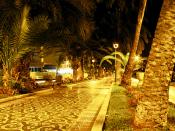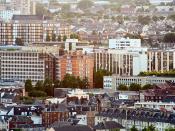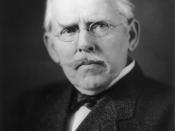Rapid urbanization began in the 1870s as people flocked to the cities. These urban centers quickly overcrowded, and many were divided into business, residential, social and ethnic centers. Among this chaos, corruption thrived as political bosses ran the city for their own personal gain and power. It appeared as if the nation was modernizing too fast because they were unable to deal with problems of urbanization. The changes in urban America in the late nineteenth century therefore are viewed to be mostly negative.
The rapid increase of urbanization was partly due to the number of immigrants that flooded America. People from rural America also migrated to the cities during this period. They gave up farms to move to cities, hoping to make a better life. Most of all, the cities owed most of their population growth to the expansion of industry. As industry kept flourishing, more workers were needed. These jobs provided long and hard work for low wages to desperate immigrants.
Conditions were horrible in the industry world and corrupt political officials were the only people who benefited, which was what separated the rich from the poor entirely in American society.
Jacob Riis was a social reformer who wrote a book that described the conditions of immigrant ghettos in New York City. He wanted to reform tenement housing and schools. He viewed the urbanization conditions for immigrants negatively. He described the tenements as rundown, filthy, and very overcrowded. In addition to the horrible conditions, the crime rate grew in those slums and many people became immoral.
Another problem that faced the cities was the traditional laissez-faire. Richard T. Ely opposed it because he believed that government interference in national economics was not harmful but helpful sometimes. He believed that turning away from the government completely had only harmed...


